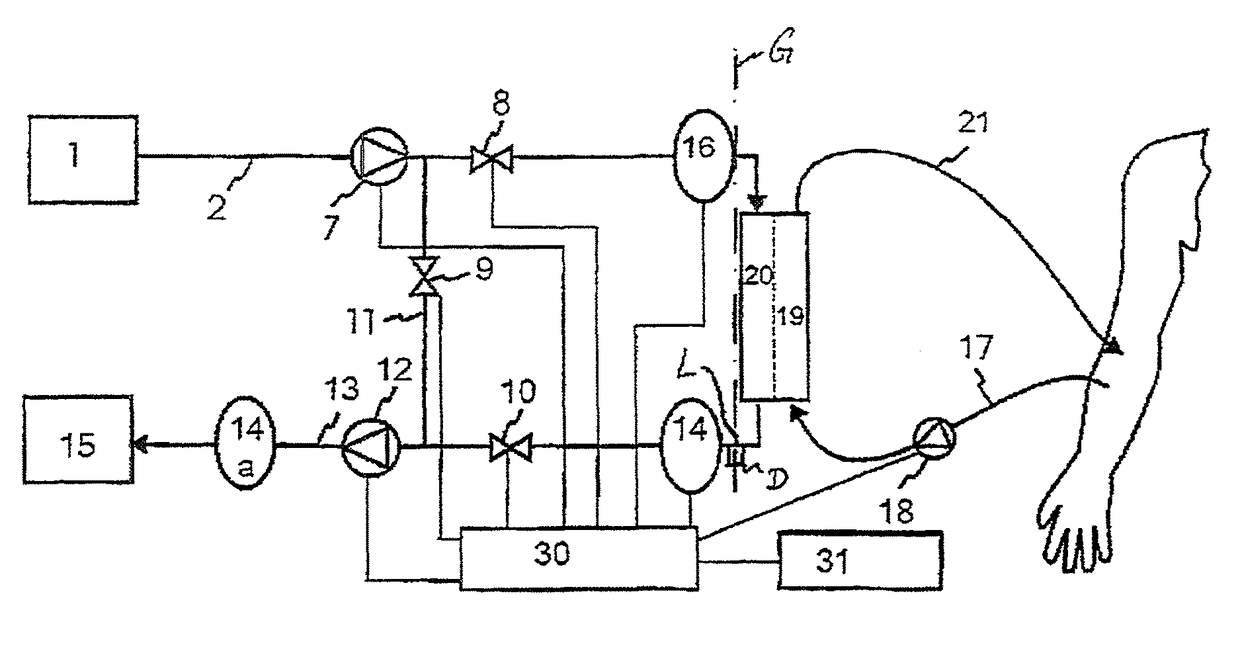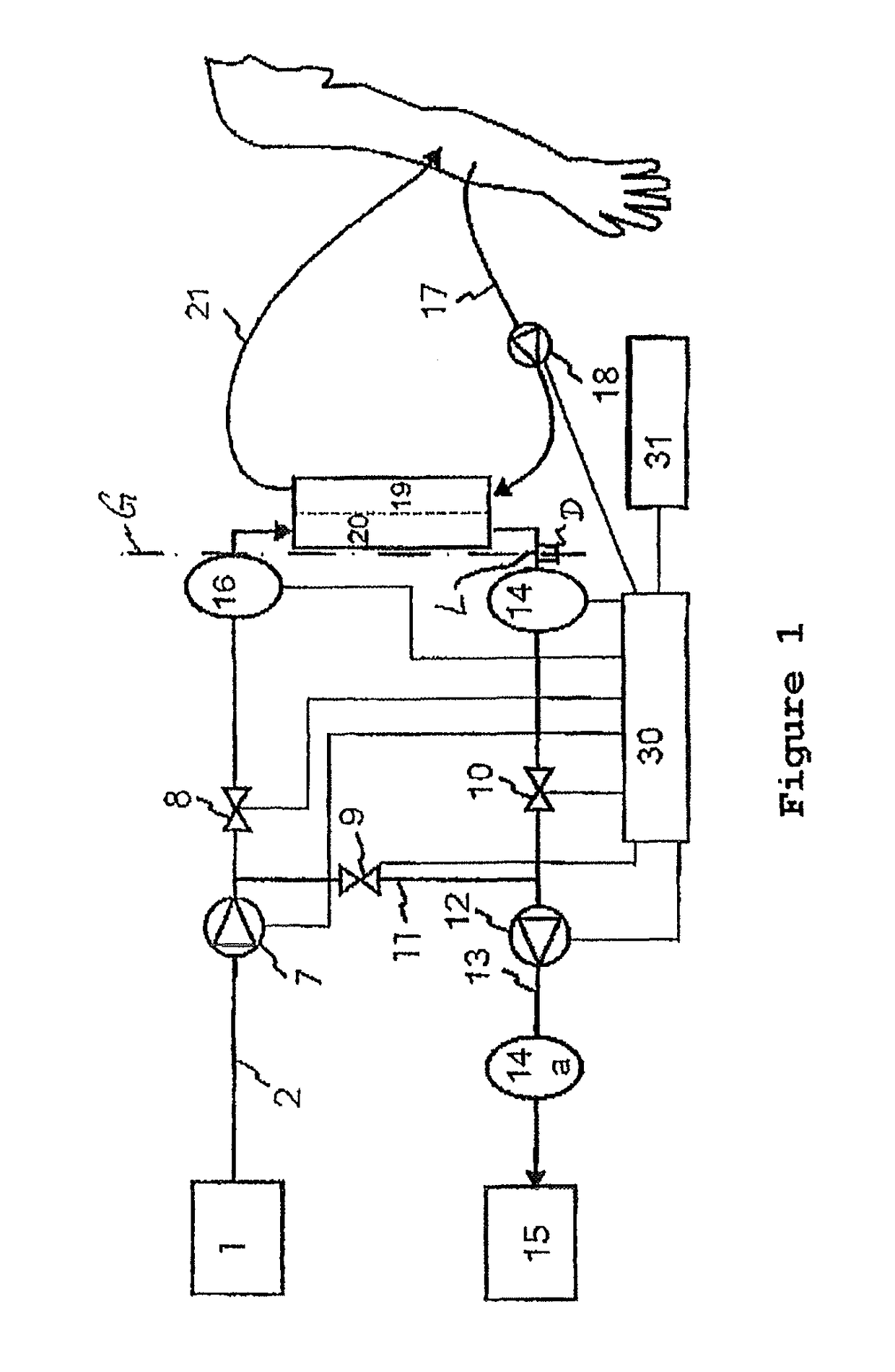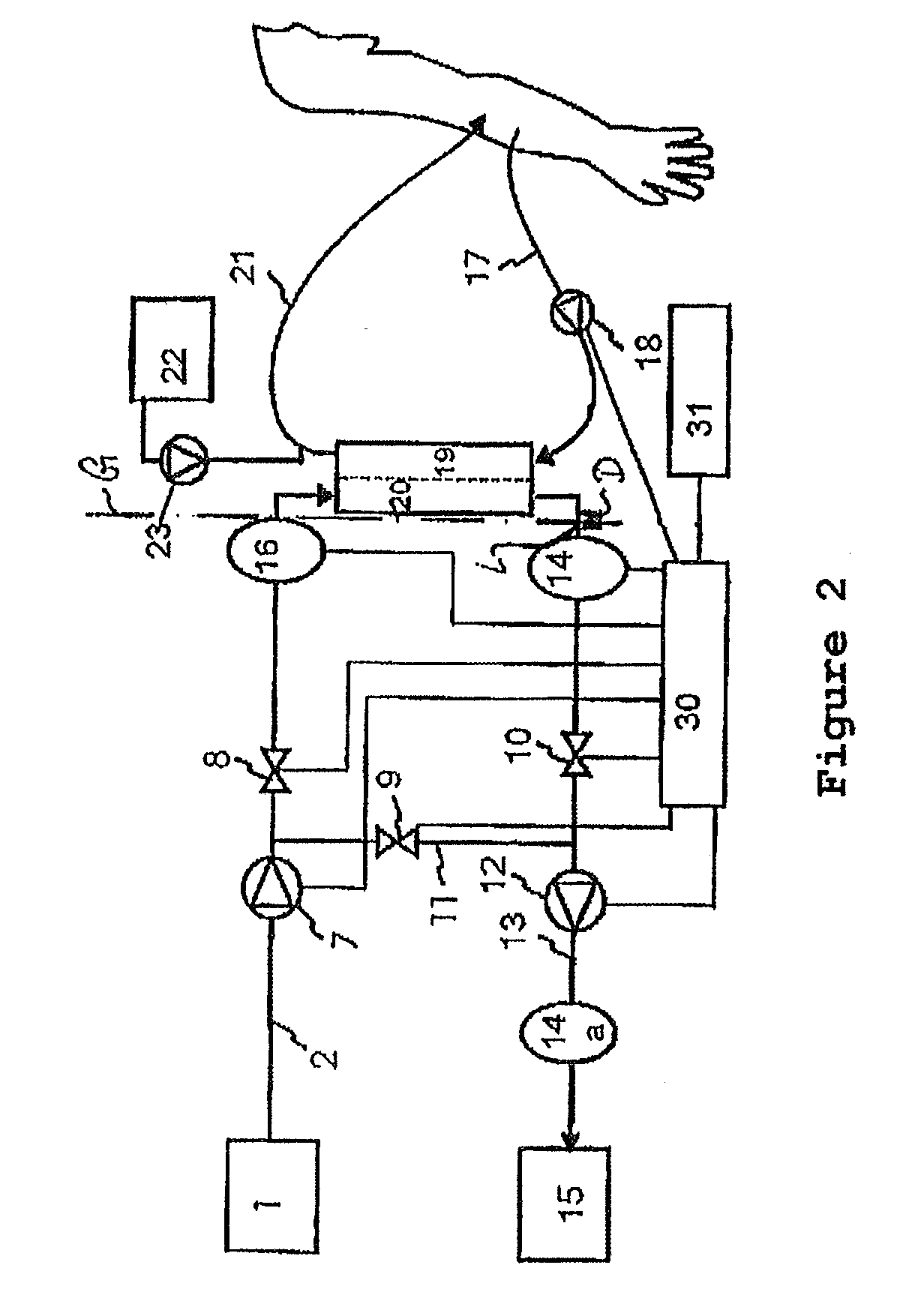Device for extracorporeal blood treatment
a technology for extracorporeal blood and blood vessels, which is applied in the direction of medical devices, suction devices, other medical devices, etc., can solve the problems of unfavorable effects, inability to temporally resolve, and often not being able to distinguish with certainty, so as to improve the quality of measuring signals
- Summary
- Abstract
- Description
- Claims
- Application Information
AI Technical Summary
Benefits of technology
Problems solved by technology
Method used
Image
Examples
Embodiment Construction
[0075]The Figures are purely illustratively and therefore not true to scale. Identical elements or elements having the same effect are provided with identical reference symbols, unless otherwise stated.
[0076]FIG. 1 shows a first embodiment of the dialysis liquid circuit according to aspects of the invention in a device for extracorporeal blood treatment (e.g. a dialysis machine). Here, the device is used for carrying out a hemodialysis without any substitution of liquid. Fresh dialysis liquid is supplied from a dialysis liquid source 1 and fed into the circuit via an inflow 2. To this end, a flow pump (FPE) 7 is provided upstream of a filter element (dialyzer). A first valve (VDE) 8 between the flow pump 7 and the filter element closes or opens an inlet of the filter element. A second valve (VDA) 10 downstream of the filter element opens or closes the dialysis liquid circuit with respect to an outlet of the filter element. In analogy to the inlet side, the outlet side of the filter ...
PUM
 Login to View More
Login to View More Abstract
Description
Claims
Application Information
 Login to View More
Login to View More - R&D
- Intellectual Property
- Life Sciences
- Materials
- Tech Scout
- Unparalleled Data Quality
- Higher Quality Content
- 60% Fewer Hallucinations
Browse by: Latest US Patents, China's latest patents, Technical Efficacy Thesaurus, Application Domain, Technology Topic, Popular Technical Reports.
© 2025 PatSnap. All rights reserved.Legal|Privacy policy|Modern Slavery Act Transparency Statement|Sitemap|About US| Contact US: help@patsnap.com



